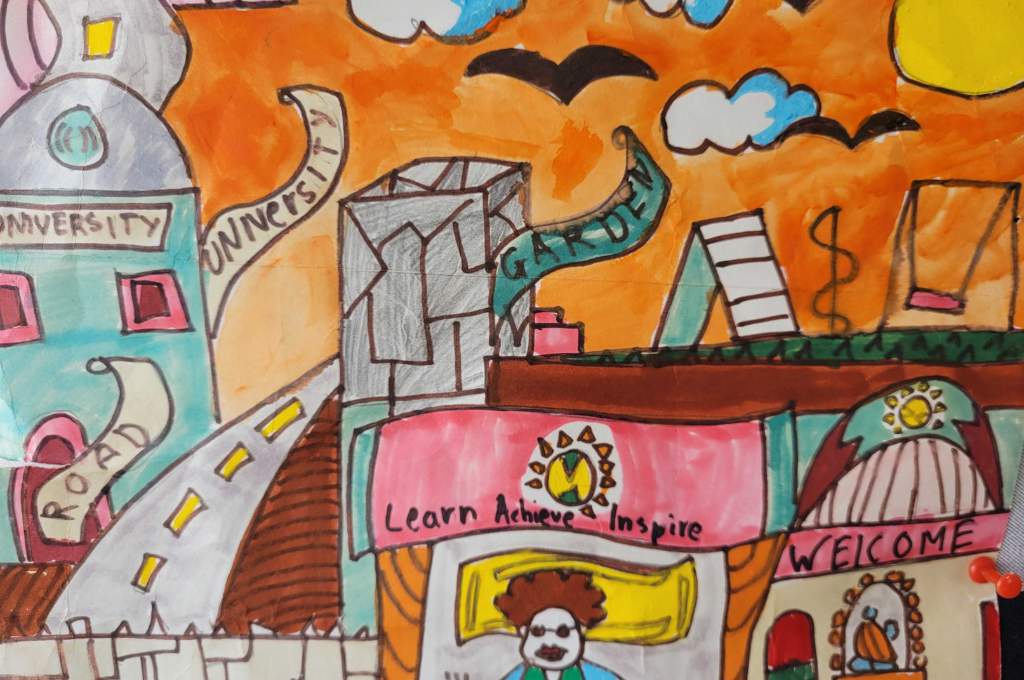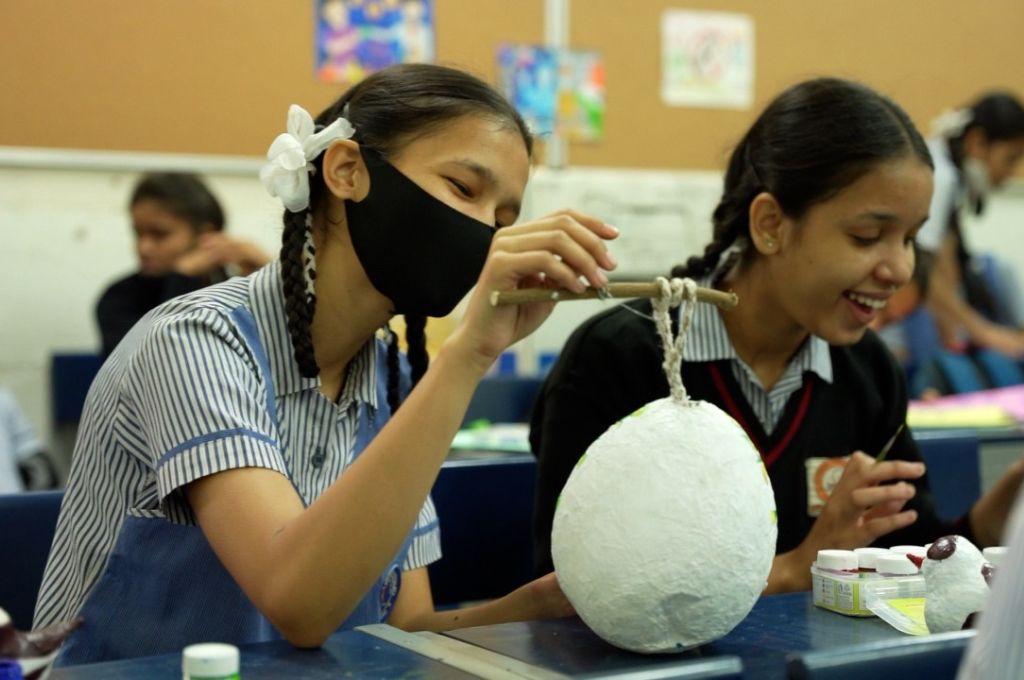According to the 2011 census, there are approximately 26.8 million people with disabilities in India, 2.04 million of whom are children. For these children with disabilities (CwDs), the path to receiving quality education is fraught with numerous challenges, rendering 75 percent of them out of formal education systems.
The challenges they encounter include lack of accessible study material and infrastructure, inadequate training provided to their educators, gaps in implementation of relevant policies, and under-reporting of diagnosis. In fact, most of these children tend to drop out by the time they reach primary or secondary school and many of them, if still enrolled, are unable to achieve foundational literacy and numeracy (FLN) skills.
Although the Rights of Persons with Disabilities (RPwD) Act 2016 guarantees the right to inclusive education for CwDs, the factors mentioned above have made it hard for this to be translated into reality.
Drawing from the experiences of Sol’s ARC in working with CwDs and promoting inclusive education over the past two decades, here are some key insights that we have gained to improve the accessibility and quality of education for these children.
Make learning materials accessible
The revised RPwD Act 2016 recognises 21 disabilities as opposed to the earlier seven. However, it states that a person is eligible for accommodations and entitlements only if they have at least 40 percent of a specific disability. This means that children who do not meet this criterion and have milder forms of disability are excluded from availing support resources such as scribes, readers, and assistive devices. Furthermore, it is near impossible to determine what level of cognitive disability meets the 40 percent mark since there are no ways to accurately measure this.
Limited access to suitable learning materials in classrooms is also a significant issue for CwDs. Resource materials for CwDs are often not readily available in mainstream schools, and standard materials used by teachers do not consider disabilities. There are no accessible materials for CwDs aligned with national programmes or classroom interventions, resulting in low educational achievement for many students.
It is essential to prioritise CwDs when creating educational resources and solutions, and not see them as an afterthought. For instance, when creating learning materials for FLN (which is underway in most states), the needs of CwDs should be kept in mind. Accessible learning materials that follow the universal design for learning standards will not just benefit CwDs but can also be used for children with large learning gaps.

Provide educators with adequate skills
The availability of educators trained to teach CwDs is an essential aspect of inclusive and quality education for these students. According to a UNESCO report, only 0.22 percent of teachers in India (1:500 pupil-teacher ratio) are qualified to be special educators, which is significantly different from the recommended 1:5 pupil-teacher ratio outlined in the Scheme of Inclusive Education for Disabled at Secondary State (IEDSS).
This low number of special educators means that they are able to visit the child only once in four to six months, whereas the recommended frequency of intervention is at least twice a week with regular follow-up. These infrequent visits with no follow-up severely hinders the child’s development. Additionally, special educators have limited knowledge of mainstream education practices and hence cannot be the primary educators for CwDs. As a result, this traditional approach of having special educators work with CwDs—which is also the model practised by most nonprofits in India—is not scalable. Moreover, it promotes segregation.
Schoolteachers, responsible for managing entire classrooms, are hesitant to devote extensive time and attention to CwDs. They believe it’s the responsibility of the special educator. And while teachers are provided inclusivity training, these are usually short, three-day workshops that are technical in nature. Technical information about disabilities is not useful if no practical knowledge is imparted on how to teach CwDs. There is also a lack of coordination between teachers and special educators to develop a common plan to monitor the progress of such students. Teachers are therefore ill-equipped and unable to teach CwDs, oftentimes not because they don’t want to but because they don’t know how to.
In order to address this critical gap, we need to identify and add a layer that can help align CwDs’ education to the mainstream. It cannot be a segregated, stand-alone intervention.
To do this, we need a three-step approach.
First, the teachers must be made responsible for all children in their classrooms. Shifting the narrative from ‘teaching children with special needs’ to ‘teaching every last child in your class’ is a powerful tool. It helps reduce the stigma around disability and promotes inclusion instead of segregation. When one creates segregated solutions, the implicit message conveyed to the child is that they are not part of the norm and that the subject is beyond their comprehension.
Second, educators should be equipped with practical knowledge and solutions to better facilitate learning for CwDs. For example, when providing instructions for a sport, a teacher can use visual aids, such as cards or notes, to ensure that all students, including those with hearing impairments, can understand the instructions.
Third, it is crucial to involve both special educators and regular teachers in monitoring the progress of CwDs. As special educators may not be able to meet with the students on a regular basis, we must think of them as experts who can support the teacher instead of working with the children directly. We need to build mechanisms that enable open and regular communication between the teacher and the special educator regarding the child’s development.
Ensure that policy translates into action
Despite India having some of the best policies for disability inclusion in the world, on-ground implementation falls short due to lack of collaboration between ministries and absence of any data.
Samagra Shiksha, the government’s overarching programme for school education, was created to ensure collaboration and convergence among the different ministries. Most of these departments take inclusion into consideration and provide for disability benefits. However, there is almost no collaboration between the various departments.
For instance, the health department screens most children from zero to three years and identifies those with disabilities. That data, however, doesn’t go to the education department. This means that when children enter schools, teachers don’t have access to this information and hence do not know which of their students have disabilities. Getting ministries to share data with one another will enable wider screening and diagnosis, along with ensuring that the child has the right resources.
Lack of accurate data also poses a big policy challenge and contributes to inadequate allocation of resources. In the absence of data on PwDs since the last census, there is a gap in identification of PwDs—we don’t know the exact numbers. The World Bank notes that the real prevalence of disability in India could easily be as high as 80–90 million.
Tamil Nadu shows the way
By leveraging the insights mentioned above, Sol’s ARC collaborated with the Tamil Nadu government to develop an app that addresses some of these challenges. It features three critical components of inclusive education for CwDs.
1. Universal screening
Tamil Nadu’s IT department, education department, and health department converged to facilitate universal screening of all children at the intersection of health, mental health, disability, and nutrition. Once a screening is completed, the children at risk are identified and tagged for diagnosis. They are also connected to other support services. If a child, for example, needs a corrective surgery, the government is responsible for providing them with adequate resources. Five million children in Tamil Nadu have undergone screening this year.
2. Accessible FLN learning materials
Accessible learning materials aligned to the state FLN programme have been developed and are being distributed to CwDs across the state. As these are aligned to the mainstream materials in the classroom, teachers find it simpler to include CwDs when teaching. Formative assessments, too, are made accessible and tracked each week by the teachers. Teachers have noted a significant change in their students following these interventions. A teacher from Theni district says, “My student is involved and participates in class activities so much more now.”
3. Training for teachers
Teacher handbooks contain visual information on the 21 disabilities. The app also has e-modules that explain how to practically navigate teaching CwDs. These solutions are simple and not dependent on assistive technology, which India at present cannot afford. Low-cost and low-tech solutions are at the forefront of this model.
Tamil Nadu’s approach to inclusive schooling is one that can be replicated across India. It’s a model that works and can easily be adopted by other state governments—all it requires is political will and the smart use of simple technology.
Inclusion, not segregation
When we talk about inclusion for PwDs, it should not be seen as a separate category. We need to think of it as a strand that can be woven in—every mainstream plan should have a component for PwDs. This applies to everyone: governments, businesses, and nonprofits. This is not a new approach. Parallels can be found in what was done with gender inclusion—the answer didn’t lie in creating separate solutions for women, but in incorporating elements such as maternity leave, flexible working hours, and safe transport into work environments.
The question we all therefore need to think about and work on is how to create solutions that just add an extra layer to support CwDs instead of creating separate solutions for them.
—
Know more
- Read this article to learn more about lapses in access to resources for CwDs.
- Read this to learn more about how technology can assist education.
- Read this guide by UNICEF on how to make schools more inclusive.
Do more
- Reach out to Sol’s Arc at [email protected] to learn more about their work.





